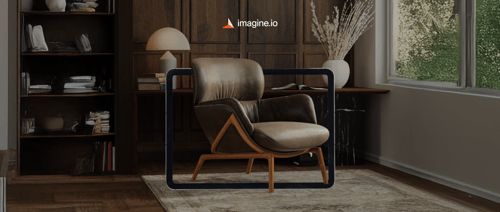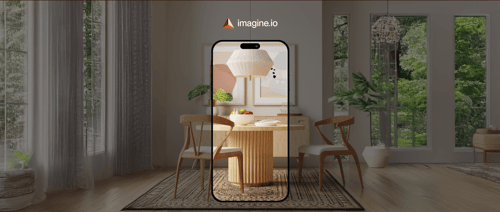Imagine a home décor brand gearing up for a major product launch. The deadline looms, but the studio is overbooked, photographers are stretched thin, and costs are spiraling. This high-stakes scramble is all too common for retailers juggling complex catalogs. Yet, a new breed of AI-powered visualization tools is rewriting the script, enabling brands to create stunning product imagery, videos, and interactive experiences without the chaos of traditional photoshoots. These platforms are not just a convenience they're a revolution, slashing costs and accelerating time-to-market while delivering visuals that rival real-world shoots.
A New Era in Retail Product Visualization
Multi-product retailers, from furniture to consumer goods, face relentless pressure to produce high-quality visuals at scale. Traditional product photography, with its dependence on physical studios, props, and skilled crews, often creates bottlenecks. A 2022 study from Grand View Research estimates the global eCommerce software market at $7.12 billion, with a projected leap to $20.90 billion by 2030, driven by a 15.3% compound annual growth rate. This growth highlights the demand for solutions that streamline inventory management and visual content creation, especially in apparel and fashion, which commanded a 35.4% market share in 2022.
Enter imagine.io, a leading AI-powered platform that empowers brands to generate photorealistic 3D images, videos, augmented reality experiences, and product configurators using real-time cloud rendering. The results are transformative: cost savings of up to 70%, eCommerce conversion boosts exceeding 500%, and faster prototyping and sales cycles. By replacing studio dependency with scalable, cloud-based tools, retailers can now keep pace with the frenetic demands of online commerce.
Emerging Trends in Visual Content Production
AI and Cloud Rendering
Cloud-based rendering is a cornerstone of this shift. Retailers no longer need to invest in costly hardware or wait days for studio setups. Instead, they can upload a 3D model and produce hundreds of high-quality visuals in minutes whether it's a sofa in various fabrics or a kitchen appliance in different lighting. This capability is a lifeline for brands managing high-volume catalogs, allowing them to scale production without sacrificing quality.
Multi-Format Content Demand
Modern shoppers crave more than static images. They expect videos, 360-degree spins, and AR viewers that let them see a lamp in their living room or a rug under their dining table. Platforms like imagine.io meet this demand by offering an all-in-one solution, creating everything from eCommerce 360 spins to interactive configurators. This versatility ensures brands can engage customers across channels, from Instagram to virtual showrooms.
Personalization at Scale
Regional preferences matter. A furniture brand targeting Los Angeles might lean into sleek, modern aesthetics, while one in High Point, North Carolina, might emphasize classic designs. Scalable platforms allow retailers to customize visuals for specific markets be it Austin, Chicago, or Canada without reshooting. This agility drives higher engagement and conversions by aligning imagery with local tastes.
Real-World Applications and Case Studies
Furniture and Home Décor
In the furniture sector, photorealistic CGI is a game-changer. Retailers can showcase a chair in countless room settings cozy lofts, sprawling estates, or minimalist condos without building a single set. Brands like Ruggable, known for innovative rugs, can generate lifestyle imagery for diverse campaigns in hours, not weeks, bypassing the logistical nightmare of physical shoots.
Consumer Goods
For consumer goods brands like KitchenAid or Maytag, speed is critical. Multi-SKU catalogs demand rapid visualization for seasonal promotions or product launches. AI platforms enable these companies to produce high-quality assets on tight timelines, ensuring they hit market windows without relying on overbooked studios.
Virtual Showrooms and Configurators
Interactive experiences are redefining eCommerce. Virtual showrooms and product configurators let customers customize a sofa's upholstery or visualize a Kichler chandelier in AR before buying. These tools boost decision confidence, reducing cart abandonment and driving sales. For brands targeting competitive markets like Dallas or Las Vegas, such features are becoming table stakes.
Key Challenges and Limitations
Subscription vs. Project-Based Models
Adopting scalable platforms comes with trade-offs. Unlike one-off photoshoots, platforms like imagine.io operate on subscription models, which can feel like a leap for retailers accustomed to project-based fees. While subscriptions unlock unlimited asset creation, some brands hesitate, wary of ongoing commitments.
Pricing Complexity
Custom pricing is another hurdle. imagine.io tailors its plans to each client's needs, which can make comparisons to standard agency rates challenging. Retailers used to vetted agency pools may find this lack of transparency a sticking point, even if the long-term value is clear.
Technology Adoption Curve
Transitioning to AI-powered tools requires effort. Teams must learn to navigate new platforms, which can demand upfront training and resources. For smaller retailers or those with lean marketing teams, this initial investment can feel daunting, despite the promise of long-term efficiency.
Opportunities and Business Impact
Speed and Scale
The ability to generate unlimited visuals in minutes is a revelation for brands like Sinomax-USA or Hunter Fan, which manage complex catalogs. Upload a model, tweak settings, and produce assets at scale no studio required. This speed empowers retailers to launch campaigns faster and stay ahead of competitors.
Creative Freedom
AI platforms unshackle creativity. Marketers can experiment with multiple styles say, a lamp in vintage or futuristic settings without the cost of reshoots. This flexibility fosters bolder, more innovative campaigns that resonate with diverse audiences across social platforms like LinkedIn and YouTube.
Cost Savings
By slashing studio dependency, retailers can save up to 70% compared to traditional photoshoots. These savings free budgets for other priorities, like targeted ads in key regions such as New York or Canada. The financial impact is amplified for brands with high-volume needs, where even small efficiencies yield big returns.
Global Reach
Scalable platforms make it easy to adapt visuals for international markets. A brand can tailor imagery for Chicago's urban shoppers or Las Vegas's bold aesthetic, ensuring campaigns feel local and relevant. With North America poised for rapid eCommerce software growth, per Grand View Research, this adaptability is a strategic advantage.
A Memorable Conclusion
As eCommerce evolves, the ability to produce compelling visuals at scale is no longer a luxury it's a necessity. AI-powered 3D visualization platforms like imagine.io are dismantling the barriers of traditional studios, offering retailers unmatched speed, quality, and creative freedom. While challenges like subscriptions and training exist, the benefits cost savings, faster launches, and personalized experiences are undeniable. Retailers should test these tools alongside existing workflows to quantify gains in efficiency and conversions. As the eCommerce software market surges toward $20.90 billion by 2030, brands that embrace scalable visualization will lead the pack, turning chaos into opportunity and captivating shoppers one pixel at a time.
Frequently Asked Questions
How can 3D visualization platforms reduce product photography costs for retailers?
AI-powered 3D visualization platforms can reduce traditional photography costs by up to 70% by eliminating the need for physical studios, props, and extensive crew setups. Retailers can upload 3D models and generate hundreds of high-quality product images, videos, and AR experiences in minutes using cloud-based rendering, rather than waiting days for studio availability and paying for expensive photoshoots.
What types of visual content can retailers create with scalable visualization platforms?
Modern visualization platforms enable retailers to create comprehensive visual content including photorealistic 3D images, 360-degree product spins, promotional videos, augmented reality experiences, and interactive product configurators. This multi-format approach allows brands to engage customers across various channels from social media to virtual showrooms, meeting the growing demand for immersive shopping experiences.
Are subscription-based visualization platforms worth it compared to traditional project-based photography?
While subscription models require ongoing commitment unlike one-off photoshoots, they offer unlimited asset creation and significant long-term value for multi-product retailers. The ability to generate unlimited visuals, experiment with different styles without reshooting costs, and adapt content for different markets typically results in faster time-to-market, higher eCommerce conversions (exceeding 500% in some cases), and substantial cost savings for brands managing complex catalogs.
Disclaimer: The above helpful resources content contains personal opinions and experiences. The information provided is for general knowledge and does not constitute professional advice.
You may also be interested in: Imagine.io | Award Winning 3D + AI Product Visualization
Struggling with expensive, outdated product visuals that slow down your creative process and stunt eCommerce growth? imagine.io's AI-powered platform empowers furniture, home décor, and textile brands to effortlessly produce striking 3D images, immersive videos, AR experiences, and interactive configurators. Cut production costs up to 70%, boost conversions 5X, speed up prototyping, and supercharge your online sales. Ready to elevate your product visuals and captivate customers? Book a demo with imagine.io today!
Powered by flareAI.co




.png?width=500&name=How%20to%20Add%20a%203D%20Product%20Configurator%20to%20Your%20WordPress%20Website%20(Complete%20B2B%20Guide).png)
















%20(1).png?width=500&name=Why%20Exploded%20Mattress%20Views%20Matter%20(And%20How%20to%20Generate%20Them)%20(1).png)
.png?width=500&name=Best%20Shopify%20Product%20Configurator_%20How%20to%20Choose%20the%20Right%20One%20(2).png)
.png?width=500&name=Why%20Exploded%20Mattress%20Views%20Matter%20(And%20How%20to%20Generate%20Them).png)



.png?width=500&name=Best%20Shopify%20Product%20Configurator_%20How%20to%20Choose%20the%20Right%20One%20(1).png)







.png?width=500&name=How%203D%20Rendering%20Can%20Make%20or%20Break%20Your%20Industrial%20Design%20Pitch%20(1).png)








%20with%20Digital%20Twins%20and%203D%20Visualization.png?width=500&name=Optimizing%20Your%20Digital%20Asset%20Management%20(DAM)%20with%20Digital%20Twins%20and%203D%20Visualization.png)




.png?width=500&name=Styling%20Home%20Decor%20for%202025_%20From%20Global%20Influences%20to%20Playful%20Personalization%20(1).png)
